How to Use a Sundial
Sundials are the earliest type of clock and use the Sun and its position to indicate the time of day, commonly known as solar time. We haven’t relied on sundials to tell time for centuries—not since time has been standardized across the world—but it can be a fun skill to learn, and might even be impressive to share with your friends.
Learn the Parts of a Sundial
Almost every sundial has two basic parts: the pointer and the dial. The pointer, also called a style or gnomon, casts a shadow, indicating the time of day. The numbered dial is the area in which the shadow falls, showing the hour. The most common sundials have a flat, circular dial, with a style that points Due North, toward the North Star. This ensures that the shadow’s movement across the dial will follow a similar motion of a clock hand.
Know Your Location
Become familiar with your local latitude, longitude, and how to locate the North Star. (Hint: For most sundials located in the Northern hemisphere, the style of the sundial points North.) Knowing your exact position will help you calculate the proper solar time.
Understand Solar Time
Solar time is the passage of time based on the Sun’s position in the sky. There are two types of solar time: apparent solar time, which is the time found on a sundial, and mean solar time, the time read on a clock. Apparent solar time is dependent on your longitude, so it is helpful to remember this rule: for every degree of longitude you live West of the center of your time zone, add four minutes to the sundial reading. If you live East of the time zone’s center, subtract four minutes for each degree. Since most time zones are fifteen degrees, or one hour, wide, it will take approximately four minutes for the Sun to cross one degree.
Find your Longitude Within Your Time Zone
An easy way to figure out this calculation is to familiarize yourself with the time difference of your location as it relates to Greenwich Mean Time (GMT). At GMT, longitude is measured at 0°. For each hour that you are ahead or behind of GMT, the center of your time zone is shifted 15° longitude to the East (if you are ahead) and West (if you are behind). In South Hadley, for example, since EST is behind by four hours, your location would be 60° West.
Remember Daylight Savings Time
If Daylight Savings Time is in effect, add or subtract one hour to the sundial time to get clock time.
Adjustments to the Discrepancy of Solar Time
Unlike clocks, solar time is never uniform. Depending on the time of year, the length of each day can vary. At any given time, the difference can be between 30 seconds to 15 minutes shorter or longer from clock time. There are many resources to help you configure the proper equation based on the time of year, including the National Oceanic and Atmospheric Administration’s solar calculator.
Read more about the Mary Deacon Bullard sundial.
October 12, 2016


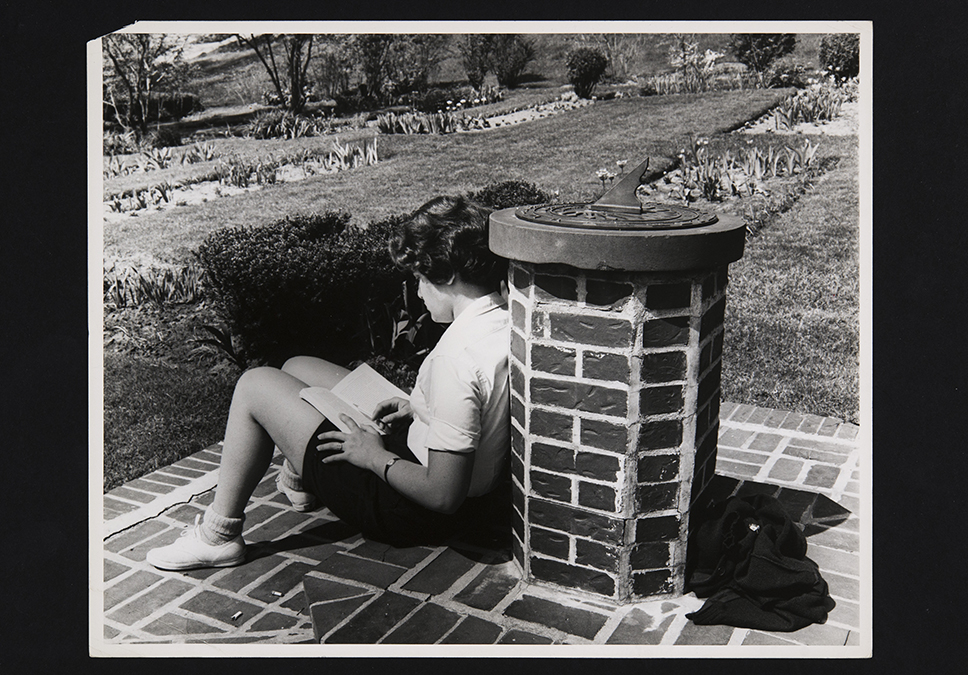


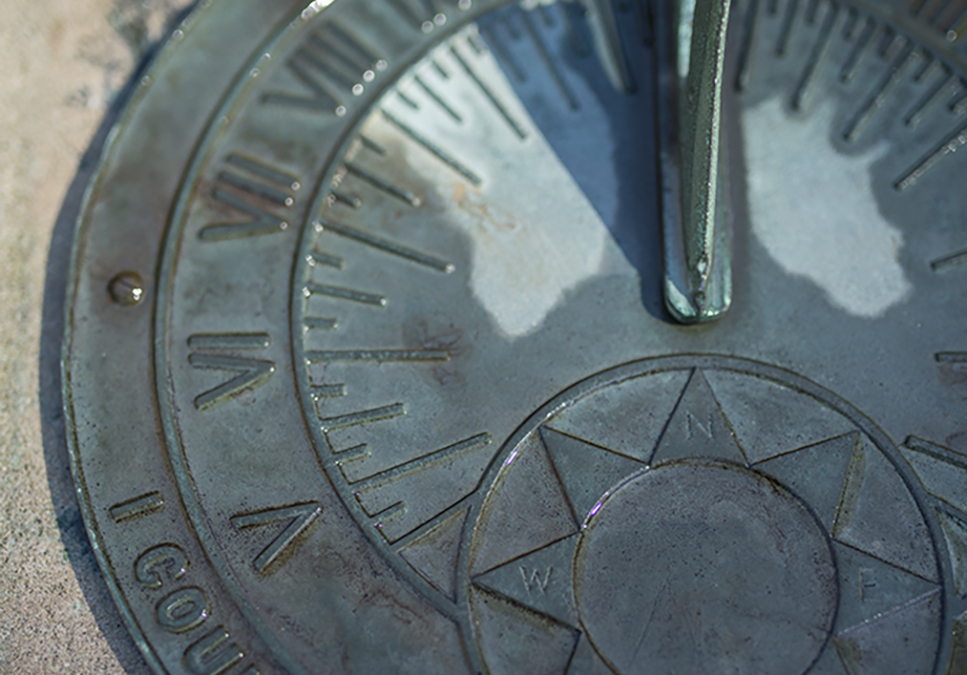
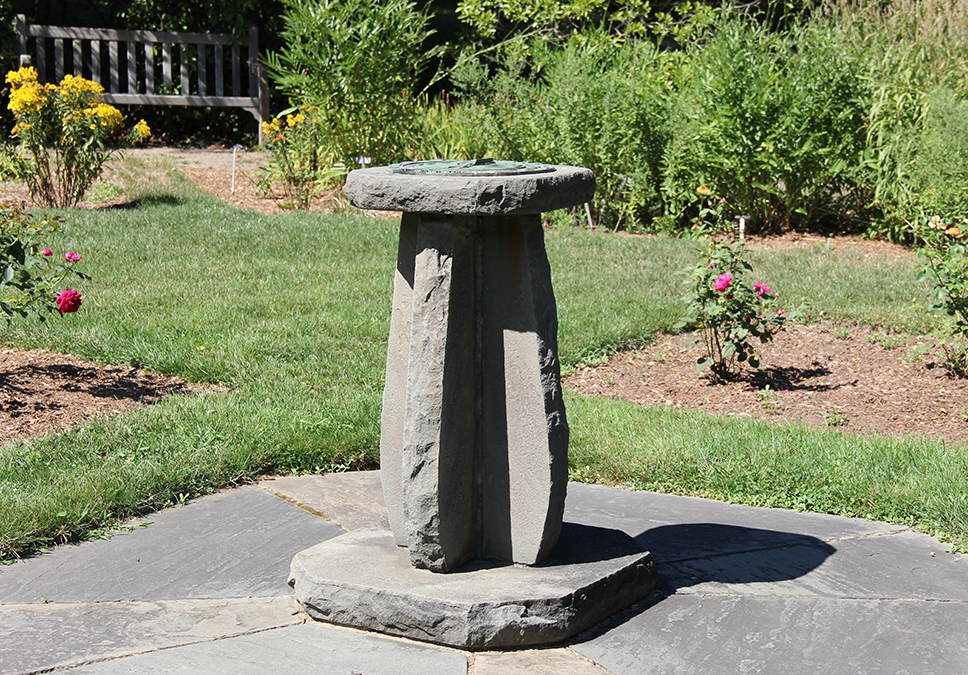
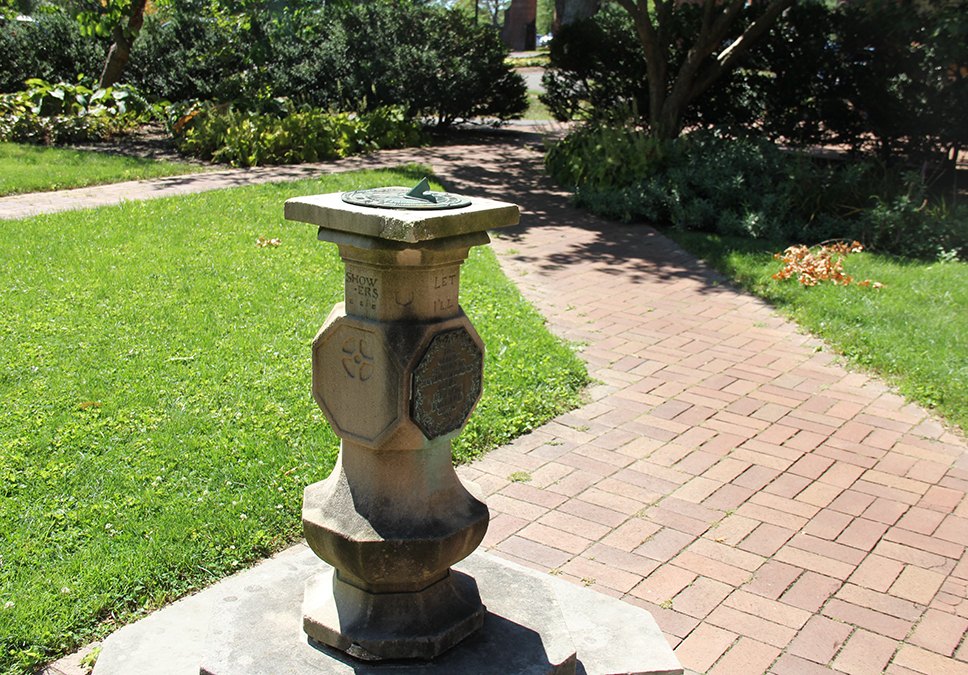









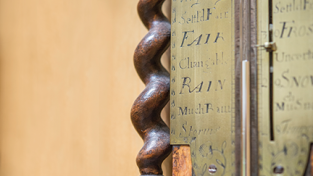

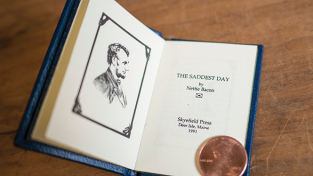
Leave a Reply